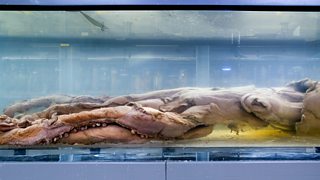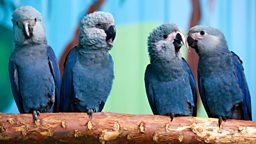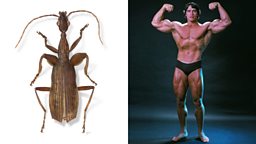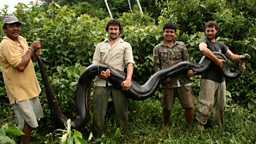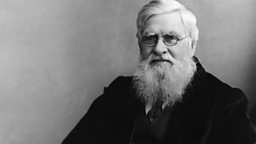Crystal clear: 10 facts about coral
1. What is a coral?
An individual coral is a polyp. It’s a very small and simple creature consisting mostly of a stomach topped by a mouth, a bit like a hungry toddler.

2. What forms the reef?
Thousands of identical polyps live together in a colony. Delivering the post is a nightmare.
3. Slowly, slowly
Corals take a very long time to grow. On average they grow between 0.5 and 2cm per year. The reefs we see today have been growing over the past 5,000 to 10,000 years.

How corals grow
Dr Erica Hendy explains how corals build 'scaffolding' at night and 'plaster' in the day.
4. Superstructures
Reefs are the largest structures on the planet created by animals. The first was formed about 500 million years ago.
The Great Barrier Reef is the largest and is made up of over 2,900 individual reefs and 900 islands stretching for over 2,600 km (over 1,800 miles) off the north east coast of Australia.
5. A unique habitat
Reefs are one of the most diverse ecosystems in the world. For this reason, coral reefs are often referred to as the rainforests of the oceans.
It is believed that around one quarter of all ocean biodiversity depends on reefs for food and shelter. Despite this, reefs cover less than 1% of the earth's surface.
6. Beside the seaside
White sand is primarily derived from coral reefs. No coral, no white sand beach.
7. Full moon party
Most corals spawn all at once, once a year. This usually happens just after a full moon when the coral eject trillions of eggs and sperm into the water at night.
8. Midnight munchies
Corals have barbed, venomous tentacles which they stick out at night to grab their prey. They catch zooplankton (tiny floating animals) and even small fish. Corals will also take out their neighbours by extruding their stomachs and digesting them alive!

The coral reef battlefield
Dr Erica Hendy describes the βwarfareβ that takes place on the coral reef βbattlefieldβ.
9. Borrowed colours
Algae give corals their striking colours. The algae produce energy by photosynthesis which is why coral is usually found in shallow, clean water. Coral bleaching occurs when corals lose their algae, exposing their white calcium carbonate skeletons.

How corals get their colours
Dr Ken Johnson explains the symbiotic relationship between coral and algae.
10. Darwinβs theory
Corals helped Darwin refine his ideas about evolution. His first scientific book after returning from the voyage of the Beagle was an account of the formation of coral reefs.

How coral islands are formed
Dr Ken Johnson explains what Charles Darwin discovered about coral atolls.
Sources: Natural Histories and Smithsonian Science.
Lions
-
![]()
How many teams can you identify from their lions?
-
![]()
Natural Histories comedy with Shaun Keaveny.
-
![]()
From Trafalgar Square to the stars of the zodiac - 11 things to learn about lions.
Giant squid
-
![]()
Yes, they really do have beaks and doughnut-shaped brains.
-
![]()
Jon Ablett introduces the Natural History Museum's 8.62m giant squid.
-
![]()
The giant squid takes pride of place as the personification of the terrors of the deep sea.
-
![]()
Natural Histories comedy with Shaun Keaveny.




